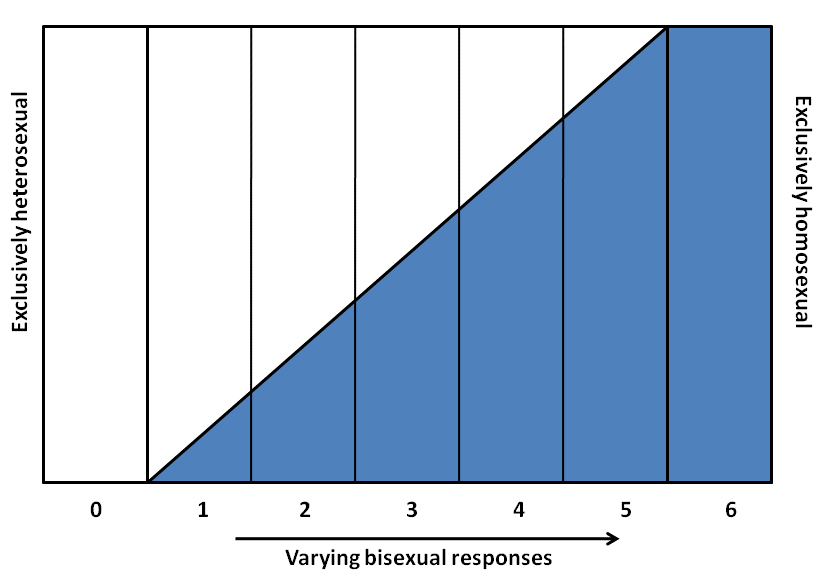Chapter 12. Gender, Sex, and Sexuality – Introduction to Sociology – 1st Canadian Edition
Chapter 12. Gender, Sex, and Sexuality

Figure 12.1. Some children may learn at an early age that their gender does not correspond with their sex. (Photo courtesy of trazomfreak/flickr)
Learning Objectives
12.1. The Difference between Sex and Gender
Define and differentiate between sex and gender
Define and discuss what is meant by gender identity
Understand and discuss the role of homophobia and heterosexism in society
Distinguish the meanings of transgendered, transsexual, and homosexual identities
12.2. Gender
Explain the influence of socialization on gender roles in Canada
Understand the stratification of gender in major North American institutions
Describe gender from the view of each sociological perspective
12.3. Sex and Sexuality
Understand different attitudes associated with sex and sexuality
Define sexual inequality in various societies
Discuss theoretical perspectives on sex and sexuality
Introduction to Gender, Sex, and Sexuality
When Harry was born, his parents, Steve and Barb, were delighted to add another boy to their family. But as their baby boy began to grow and develop, they noticed that Harry began to express himself in a manner that they viewed as more feminine than masculine. He gravitated toward dolls and other toys that our culture typically associates with girls. But Harry’s preference was not simply about liking pink more than blue or flowers more than fire trucks. He even began to draw himself as a girl, complete with a dress and high-heeled shoes. In fact, Harry did not just wish to be a girl; he believed he was a girl.
In kindergarten, Harry often got into arguments with male classmates because he insisted that he was a girl, not a boy. He even started calling himself “Hailey.” Steve and Barb met with several psychologists, all of whom told them that Hailey was transgendered. But Steve and Barb had a hard time understanding that their five-year-old son could have already developed a gender identity that went against society’s expectations. Concerned with the social ramifications associated with his child being transgendered, Steve hoped this was just a phase. But Barb, and eventually Steve, realized that Harry’s feelings were genuine and unyielding, and they made the decision to let Harry live as Hailey—a girl. They came to this decision after concluding that the criticism he would endure from his peers and other members of society would be less damaging than the confusion he might experience internally if he were forced to live as a boy.
Many transgendered children grow up hating their bodies, and this population can have high rates of drug abuse and suicide (Weiss 2011). Fearful of these outcomes and eager to make their child happy, Steve and Barb now refer to Harry as Hailey and allow her to dress and behave in manners that are considered feminine. To a stranger, Hailey is likely to appear just like any other girl and may even be considered extra girly due to her love of all things pink. But to those who once knew Hailey as Harry, Hailey is likely to endure more ridicule and rejection as the result of adopting a feminine gender identity.
Currently, seven-year-old Hailey and her parents are comfortable with her gender status, but Steve and Barb are concerned about what questions and problems might arise as she gets older. “Who’s going to love my child?” asks Steve (Ling 2011). This question isn’t asked because Hailey is unlovable, but because North American society has yet to fully listen to or understand the personal narratives of the transgendered population (Hines and Sanger 2010).
In this chapter, we will discuss the differences between sex and gender, along with issues like gender identity and sexuality. What does it mean to “have” a gender in our society? What does it mean to “have” a sexuality? We will also explore various theoretical perspectives on the subjects of gender and sexuality.
12.1. The Difference between Sex and Gender

Figure 12.2. While the biological differences between males and females are fairly straightforward, the social and cultural aspects of being a man or woman can be complicated. (Photo courtesy of FaceMePLS/flickr)
When filling out a document such as a job application or school registration form you are often asked to provide your name, address, phone number, birth date, and sex or gender. But have you ever been asked to provide your sex and your gender? As with most people, it may not have occurred to you that sex and gender are not the same. However, sociologists and most other social scientists view sex and gender as conceptually distinct. Sex refers to physical or physiological differences between males and females, including both primary sex characteristics (the reproductive system) and secondary characteristics such as height and muscularity. Gender is a term that refers to social or cultural distinctions associated with being male or female. Gender identity is the extent to which one identifies as being either masculine or feminine (Diamond 2002).
A person’s sex, as determined by his or her biology, does not always correspond with his or her gender. Therefore, the terms sex and gender are not interchangeable. A baby boy who is born with male genitalia will be identified as male. As he grows, however, he may identify with the feminine aspects of his culture. Since the term sex refers to biological or physical distinctions, characteristics of sex will not vary significantly between different human societies. For example, all persons of the female sex, in general, regardless of culture, will eventually menstruate and develop breasts that can lactate. Characteristics of gender, on the other hand, may vary greatly between different societies. For example, in American culture, it is considered feminine (or a trait of the female gender) to wear a dress or skirt. However, in many Middle Eastern, Asian, and African cultures, dresses or skirts (often referred to as sarongs, robes, or gowns) can be considered masculine. The kilt worn by a Scottish male does not make him appear feminine in his culture.

Figure 12.3. George Catlin (1796-1872), Dance to the Berdache. Caitlin’s sketch depicts a ceremonial dance among the Sac and Fox Indians to celebrate the two-spirit person. (Photo couresy of Wikimedia Commons).
The dichotomous view of gender (the notion that one is either male or female) is specific to certain cultures and is not universal. In some cultures, gender is viewed as fluid. In the past, some anthropologists used the term berdache to refer to individuals who occasionally or permanently dressed and lived as the opposite gender. The practice has been noted among certain Aboriginal groups (Jacobs, Thomas, and Lang 1997). Samoan culture accepts what they refer to as a “third gender.” Fa’afafine, which translates as “the way of the woman,” is a term used to describe individuals who are born biologically male but embody both masculine and feminine traits. Fa’afafines are considered an important part of Samoan culture. Individuals from other cultures may mislabel them as homosexuals because fa’afafines have a varied sexual life that may include men or women (Poasa 1992).
Making Connections: Social Policy & Debate
The Legalese of Sex and Gender
The terms sex and gender< have not always been differentiated in the English language. It was not until the 1950s that American and British psychologists and other professionals working with intersex and transsexual patients formally began distinguishing between sex and gender. Since then, psychological and physiological professionals have increasingly used the term gender (Moi 2005). By the end of the 2oth century, expanding the proper usage of the term gender to everyday language became more challenging—particularly where legal language is concerned. In an effort to clarify usage of the terms sex and gender, U.S. Supreme Court Justice Antonin Scalia wrote in a 1994 briefing, “The word gender has acquired the new and useful connotation of cultural or attitudinal characteristics (as opposed to physical characteristics) distinctive to the sexes. That is to say, gender is to sex as feminine is to female and masculine is to male” (J.E.B. v. Alabama, 144 S. Ct. 1436 [1994]). Supreme Court Justice Ruth Bader Ginsburg had a different take, however. Viewing the words as synonymous, she freely swapped them in her briefings so as to avoid having the word “sex” pop up too often. It is thought that her secretary supported this practice by suggestions to Ginsberg that “those nine men” (the other Supreme Court justices), “hear that word and their first association is not the way you want them to be thinking” (Case 1995).
In Canada, there has not been the same formal deliberations on the legal meanings of sex and gender. The distinction between sex as a physiological attribute and gender as social attribute has been used without controversy. However, things can get a little tricky when biological “sex” is regarded as simply a natural fact, especially in the case of transsexuals (Cowan 2005). For example, in British Columbia, people who have surgery to change their anatomical sex can apply through the provisions of the Vital Statistics Act to have their birth certificate changed to reflect their post-operative sex. If a person was born male, does this mean that after surgery that person is fully regarded as a female in the eyes of the law though? In the 2002 case of Nixon v. Vancouver Rape Relief Society, a male to female transsexual, Kimberly Nixon brought an application to the B.C. Human Rights Tribunal that she had been discriminated against by the Vancouver Rape Relief Society (VRR) when her application to volunteer as a helper was rejected. The controversy was not over whether Kimberly was a woman, but whether she was woman enough for the position. VRR argued that as Kimberly had not grown up as a woman, she did not have the requisite lived experience as a woman in patriarchal society to counsel women rape victims. The B.C. Human Rights Tribunal ruled against VRR, finding that they had discriminated against Kimberly as a transsexual. The ruling was overturned by the Supreme Court of British Columbia, which argued that the Act ‘‘did not address all the potential legal consequences of sex reassignment surgery’’ (Cowan 2005, p. 87). The court acknowledged that the meaning of both sex and gender vary in different contexts. The case is currently under appeal.
These legal issues reveal that even human experience that is assumed to be biological and personal (such as our self-perception and behaviour) is actually a socially defined variable by culture. The question of “what makes a woman” in the case of Nixon v. Vancouver Rape Relief Society is a matter of legal decision making as much as it is a matter of biology or lived experience.
Sexual Orientation
Sexual orientation refers to a person’s emotional and sexual attraction to a particular sex (male or female). Sexual orientation is typically divided into four categories: heterosexuality, the attraction to individuals of the opposite sex; homosexuality, the attraction to individuals of one’s own sex; bisexuality, the attraction to individuals of either sex; and asexuality, no attraction to either sex. Heterosexuals and homosexuals may also be referred to informally as “straight” and “gay,” respectively. North America is a heteronormative society, meaning it supports heterosexuality as the norm. Consider that homosexuals are often asked, “When did you know you were gay?” but heterosexuals are rarely asked, “When did you know that you were straight?” (Ryle 2011).
According to current scientific understanding, individuals are usually aware of their sexual orientation between middle childhood and early adolescence (American Psychological Association 2008). They do not have to participate in sexual activity to be aware of these emotional, romantic, and physical attractions; people can be celibate and still recognize their sexual orientation. Homosexual women (also referred to as lesbians), homosexual men (also referred to as gays), and bisexuals of both genders may have very different experiences of discovering and accepting their sexual orientation. At the point of puberty, some may be able to claim their sexual orientations while others may be unready or unwilling to make their homosexuality or bisexuality known since it goes against North American society’s historical norms (APA 2008).
Alfred Kinsey was among the first to conceptualize sexuality as a continuum rather than a strict dichotomy of gay or straight. To classify this continuum of heterosexuality and homosexuality, Kinsey created a six-point rating scale that ranges from exclusively heterosexual to exclusively homosexual (see Figure 12.4). In his 1948 work Sexual Behavior in the Human Male, Kinsey writes, “Males do not represent two discrete populations, heterosexual and homosexual. The world is not to be divided into sheep and goats … The living world is a continuum in each and every one of its aspects” (Kinsey et al 1948).

Figure 12.4. The Kinsey scale indicates that sexuality can be measured by more than just heterosexuality and homosexuality.
Later scholarship by Eve Kosofsky Sedgwick expanded on Kinsey’s notions. She coined the term “homosocial” to oppose “homosexual,” describing nonsexual same-sex relations. Sedgwick recognized that in North American culture, males are subject to a clear divide between the two sides of this continuum, whereas females enjoy more fluidity. This can be illustrated by the way women in Canada can express homosocial feelings (nonsexual regard for people of the same sex) through hugging, handholding, and physical closeness. In contrast, Canadian males refrain from these expressions since they violate the heteronormative expectation. While women experience a flexible norming of variations of behaviour that spans the heterosocial-homosocial spectrum, male behaviour is subject to strong social sanction if it veers into homosocial territory because of societal homophobia (Sedgwick 1985).
There is no scientific consensus regarding the exact reasons why an individual holds a heterosexual, homosexual, or bisexual orientation. There has been research conducted to study the possible genetic, hormonal, developmental, social, and cultural influences on sexual orientation, but there has been no evidence that links sexual orientation to one factor (APA 2008). Research, however, does present evidence showing that homosexuals and bisexuals are treated differently than heterosexuals in schools, the workplace, and the military. The 2009 Canadian Climate Survey reported that 59 percent of LGBT (lesbian, gay, bisexual, or transgendered) high school students had been subject to verbal harassment at school compared to 7 percent of non-LGBT students, 25 percent had been subject to physical harassment compared to 8 percent of non-LGBT students, 31 percent had been subject to cyber-bullying (via internet or text messaging) compared to 8 percent of non-LGBT students, 73 percent felt unsafe at school compared to 20 percent of non-LGBT students, and 51 percent felt unaccepted at school compared to 19 percent of non-LGBT students (Taylor and Peter 2011).
Much of this discrimination is based on stereotypes, misinformation, and homophobia, an extreme or irrational aversion to homosexuals. Major policies to prevent discrimination based on sexual orientation have not come into effect until the last few years. In 2005 the federal government legalized same-sex marriage. The Civil Marriage Act now describes marriage in Canada in gender neutral terms: “Marriage, for civil purposes, is the lawful union of two persons to the exclusion of all others” (Civil Marriage Act (S.C. 2005, c. 33)). The Canadian Human Rights Act was amended in 1996 to explicitly prohibit discrimination based on sexual orientation, including the unequal treatment of gay men, lesbians, and bisexuals. Organizations such as Egale Canada (Equality for Gays And Lesbians Everywhere) advocate for LGBT rights, establish gay pride organizations in Canadian communities, and promote gay-straight alliance support groups in schools. Advocacy agencies frequently use the acronym LGBTQ, which stands for “lesbian, gay, bisexual, transgendered,” and “queer” or “questioning.”
Gender Roles
As we grow, we learn how to behave from those around us. In this socialization process, children are introduced to certain roles that are typically linked to their biological sex. The term gender role refers to society’s concept of how men and women are expected to act and how they should behave. These roles are based on norms, or standards, created by society. In Canadian culture, masculine roles are usually associated with strength, aggression, and dominance, while feminine roles are usually associated with passivity, nurturing, and subordination. Role learning starts with socialization at birth. Even today, our society is quick to outfit male infants in blue and girls in pink, even applying these colour-coded gender labels while a baby is in the womb.
One way children learn gender roles is through play. Parents typically supply boys with trucks, toy guns, and superhero paraphernalia, which are active toys that promote motor skills, aggression, and solitary play. Girls are often given dolls and dress-up apparel that foster nurturing, social proximity, and role play. Studies have shown that children will most likely choose to play with “gender appropriate” toys (or same-gender toys) even when cross-gender toys are available because parents give children positive feedback (in the form of praise, involvement, and physical closeness) for gender-normative behaviour (Caldera, Huston, and O’Brien 1998).

Figure 12.5. Fathers tend to be more involved when their sons engage in gender appropriate activities such as sports. (Photo courtesy of stephanski/flickr)
The drive to adhere to masculine and feminine gender roles continues later in life. Men tend to outnumber women in professions such as law enforcement, the military, and politics. Women tend to outnumber men in care-related occupations such as child care, health care, and social work. These occupational roles are examples of typical Canadian male and female behaviour, derived from our culture’s traditions. Adherence to them demonstrates fulfillment of social expectations but not necessarily personal preference (Diamond 2002).
Gender Identity
Canadian society allows for some level of flexibility when it comes to acting out gender roles. To a certain extent, men can assume some feminine roles and women can assume some masculine roles without interfering with their gender identity. Gender identity is an individual’s self-conception of being male or female based on his or her association with masculine or feminine gender roles.
Individuals who identify with the role that is the opposite of their biological sex are called transgendered. Transgendered males, for example, have such a strong emotional and psychological connection to the feminine aspects of society that they identify their gender as female. The parallel connection to masculinity exists for transgendered females. It is difficult to determine the prevalence of transgenderism in society. Statistics Canada states that they have neither the definitive number of people whose sexual orientation is lesbian, gay, or bisexual, nor the number of people who are transgendered (Statistics Canada 2011). However, it is estimated that 2 to 5 percent of the U.S. population is transgendered (Transgender Law and Policy Institute 2007).
Transgendered individuals who wish to alter their bodies through medical interventions such as surgery and hormonal therapy—so that their physical being is better aligned with gender identity—are called transsexuals. They may also be known as male-to-female (MTF) or female-to-male (FTM) transsexuals. Not all transgendered individuals choose to alter their bodies: many will maintain their original anatomy but may present themselves to society as the opposite gender. This is typically done by adopting the dress, hairstyle, mannerisms, or other characteristic typically assigned to the opposite gender. It is important to note that people who cross-dress, or wear clothing that is traditionally assigned to opposite gender, are not necessarily transgendered. Cross-dressing is typically a form of self-expression, entertainment, or personal style, not necessarily an expression against one’s assigned gender (APA 2008).
There is no single, conclusive explanation for why people are transgendered. Transgendered expressions and experiences are so diverse that it is difficult to identify their origin. Some hypotheses suggest biological factors such as genetics or prenatal hormone levels as well as social and cultural factors such as childhood and adulthood experiences. Most experts believe that all of these factors contribute to a person’s gender identity (APA 2008).
It is known, however, that transgendered and transsexual individuals experience discrimination based on their gender identity. People who identify as transgendered are twice as likely to experience assault or discrimination as non-transgendered individuals; they are also one and a half times more likely to experience intimidation (National Coalition of Anti-Violence Programs 2010). Organizations such as the Canadian Professional Association for Transgender Health (CPATH), Trans Pulse, and National Center for Trans Equality work to support and prevent, respond to, and end all types of violence against transgendered, transsexual, and homosexual individuals. These organizations hope that by educating the public about gender identity and empowering transgendered and transsexual individuals, this violence will end.
Making Connections: Sociology in the Real World
Real-Life Freaky Friday
What if you had to live as the opposite sex? If you are a man, imagine that you were forced to wear frilly dresses, dainty shoes, and makeup to special occasions, and you were expected to enjoy romantic comedies and glamour reality shows. If you are a woman, imagine that you were forced to wear shapeless clothing, put only minimal effort into your personal appearance, not show emotion, and watch countless hours of sporting events and sports-related commentary. It would be pretty uncomfortable, right? Well, maybe not. Many people enjoy participating in activities that are typically associated with the opposite sex and would not mind if some of the cultural expectations for men and women were loosened.
Now, imagine that when you look at your body in the mirror, you feel disconnected. You feel your genitals are shameful and dirty, and you feel as though you are trapped in someone else’s body with no chance of escape. As you get older, you hate the way your body is changing, and, therefore, you hate yourself. These elements of disconnect and shame are important to understand when discussing transgendered individuals. Fortunately, sociological studies pave the way for a deeper and more empirically grounded understanding of transgendered experience.

Figure 12.6. Chaz Bono is the transgendered son of Cher and Sonny Bono. Being transgendered is not about clothing or hairstyles; it is about self-perception. (Photo courtesy of Greg Hernandez/flickr)
12.2. Gender

Figure 12.7. Traditional images of North American gender roles reinforce the idea that women should be subordinate to men. (Photo courtesy of Sport Suburban/Flickr)
Gender and Socialization
The phrase “boys will be boys” is often used to justify behaviour such as pushing, shoving, or other forms of aggression from young boys. The phrase implies that such behaviour is unchangeable and something that is part of a boy’s nature. Aggressive behaviour, when it does not inflict significant harm, is often accepted from boys and men because it is congruent with the cultural script for masculinity. The “script” written by society is in some ways similar to a script written by a playwright. Just as a playwright expects actors to adhere to a prescribed script, society expects women and men to behave according to the expectations of their respective gender role. Scripts are generally learned through a process known as socialization, which teaches people to behave according to social norms.
Socialization
Children learn at a young age that there are distinct expectations for boys and girls. Cross-cultural studies reveal that children are aware of gender roles by age two or three. At four or five, most children are firmly entrenched in culturally appropriate gender roles (Kane 1996). Children acquire these roles through socialization, a process in which people learn to behave in a particular way as dictated by societal values, beliefs, and attitudes. For example, society often views riding a motorcycle as a masculine activity and, therefore, considers it to be part of the male gender role. Attitudes such as this are typically based on stereotypes, oversimplified notions about members of a group. Gender stereotyping involves overgeneralizing about the attitudes, traits, or behaviour patterns of women or men. For example, women may be thought of as too timid or weak to ride a motorcycle.

Figure 12.8. Although our society may have a stereotype that associates motorcycles with men, female bikers demonstrate that a woman’s place extends far beyond the kitchen in modern Canada. (Photo courtesy of Robert Couse-Baker/Flickr)
Gender stereotypes form the basis of sexism. Sexism refers to prejudiced beliefs that value one sex over another. Sexism varies in its level of severity. In parts of the world where women are strongly undervalued, young girls may not be given the same access to nutrition, health care, and education as boys. Further, they will grow up believing that they deserve to be treated differently from boys (Thorne 1993; UNICEF 2007). While illegal in Canada when practised as discrimination, unequal treatment of women continues to pervade social life. It should be noted that discrimination based on sex occurs at both the micro- and macro-levels. Many sociologists focus on discrimination that is built into the social structure; this type of discrimination is known as institutional discrimination (Pincus 2008).
Gender socialization occurs through four major agents of socialization: family, education, peer groups, and mass media. Each agent reinforces gender roles by creating and maintaining normative expectations for gender-specific behaviour. Exposure also occurs through secondary agents such as religion and the workplace. Repeated exposure to these agents over time leads men and women into a false sense that they are acting naturally rather than following a socially constructed role.
Family is the first agent of socialization. There is considerable evidence that parents socialize sons and daughters differently. Generally speaking, girls are given more latitude to step outside of their prescribed gender role (Coltrane and Adams 2004; Kimmel 2000; Raffaelli and Ontai 2004). However, differential socialization typically results in greater privileges afforded to boys. For instance, sons are allowed more autonomy and independence at an earlier age than daughters. They may be given fewer restrictions on appropriate clothing, dating habits, or curfew. Sons are also often free from performing domestic duties such as cleaning or cooking and other household tasks that are considered feminine. Daughters are limited by their expectation to be passive, nurturing, and generally obedient, and to assume many of the domestic responsibilities.
Even when parents set gender equality as a goal, there may be underlying indications of inequality. For example, when dividing up household chores, boys may be asked to take out the garbage or perform other tasks that require strength or toughness, while girls may be asked to fold laundry or perform duties that require neatness and care. It has been found that fathers are firmer in their expectations for gender conformity than are mothers, and their expectations are stronger for sons than they are for daughters (Kimmel 2000). This is true in many types of activities, including preference of toys, play styles, discipline, chores, and personal achievements. As a result, boys tend to be particularly attuned to their father’s disapproval when engaging in an activity that might be considered feminine, like dancing or singing (Coltrane and Adams 2008). It should be noted that parental socialization and normative expectations vary along lines of social class, race, and ethnicity. Research in the United States has shown that African American families, for instance, are more likely than Caucasians to model an egalitarian role structure for their children (Staples and Boulin Johnson 2004).
The reinforcement of gender roles and stereotypes continues once a child reaches school age. Until very recently, schools were rather explicit in their efforts to stratify boys and girls. The first step toward stratification was segregation. Girls were encouraged to take home economics or humanities courses and boys to take shop, math, and science courses.
Studies suggest that gender socialization still occurs in schools today, perhaps in less obvious forms (Lips 2004). Teachers may not even realize that they are acting in ways that reproduce gender-differentiated behaviour patterns. Yet, any time they ask students to arrange their seats or line up according to gender, teachers are asserting that boys and girls should be treated differently (Thorne 1993).
Even in levels as low as kindergarten, schools subtly convey messages to girls indicating that they are less intelligent or less important than boys. For example, in a study involving teacher responses to male and female students, data indicated that teachers praised male students far more than their female counterparts. Additionally, teachers interrupted girls more and gave boys more opportunities to expand on their ideas (Sadker and Sadker 1994). Further, in social as well as academic situations, teachers have traditionally positioned boys and girls oppositionally—reinforcing a sense of competition rather than collaboration (Thorne 1993). Boys are also permitted a greater degree of freedom regarding rule-breaking or minor acts of deviance, whereas girls are expected to follow rules carefully and to adopt an obedient posture (Ready 2001). Schools reinforce the polarization of gender roles and the age-old “battle of the sexes” by positioning girls and boys in competitive arrangements.
Mimicking the actions of significant others is the first step in the development of a separate sense of self (Mead 1934). Like adults, children become agents who actively facilitate and apply normative gender expectations to those around them. When children do not conform to the appropriate gender role, they may face negative sanctions such as being criticized or marginalized by their peers. Though many of these sanctions are informal, they can be quite severe. For example, a girl who wishes to take karate class instead of dance lessons may be called a “tomboy” and face difficulty gaining acceptance from both male and female peer groups (Ready 2001). Boys, especially, are subject to intense ridicule for gender nonconformity (Coltrane and Adams 2008; Kimmel 2000).
Mass media serves as another significant agent of gender socialization. In television and movies, women tend to have less significant roles and are often portrayed as wives or mothers. When women are given a lead role, they are often one of two extremes: a wholesome, saint-like figure or a malevolent, hypersexual figure (Etaugh and Bridges 2003). This same inequality is pervasive in children’s movies (Smith 2008). Research indicates that of the 101 top-grossing G-rated movies released between 1990 and 2005, three out of four characters were male. Out of those 101 movies, only seven were near being gender balanced, with a character ratio of less than 1.5 males per 1 female (Smith 2008).
Television commercials and other forms of advertising also reinforce inequality and gender-based stereotypes. Women are almost exclusively present in ads promoting cooking, cleaning, or child care–related products (Davis 1993). Think about the last time you saw a man star in a dishwasher or laundry detergent commercial. In general, women are underrepresented in roles that involve leadership, intelligence, or a balanced psyche. Of particular concern is the depiction of women in ways that are dehumanizing, especially in music videos. Even in mainstream advertising, however, themes intermingling violence and sexuality are quite common (Kilbourne 2000).
Social Stratification and Inequality
Stratification refers to a system in which groups of people experience unequal access to basic, yet highly valuable, social resources. Canada is characterized by gender stratification (as well as stratification of race, income, occupation, and the like). Evidence of gender stratification is especially keen within the economic realm. Despite women making up nearly half (48 percent) of payroll employment, men vastly outnumber them in authoritative, powerful, and, therefore, high-earning jobs (Statistics Canada 2011). Women’s income for full-year, full-time workers has remained at 72 percent of the income of men since 1992. The average hourly wage is better: Women earned 83 percent of men’s average hourly wage in 2008, up from 76 percent in 1988 (Statistics Canada 2011). However, as one report noted, if the gender gap in wages continues to close at the same glacial rate, women will not earn the same as men until the year 2240 (McInturff 2013). Additionally, women who are in the paid labour force still do the majority of the unpaid work at home. In 2010 women spent an average 50 hours a week looking after children compared to 24.4 hours a week for men, 13.8 hours a week doing household work compared to 8.3 hours for men, and 49 percent of women spent more than 10 hours a week caring for a senior compared to 25 percent for men (Statistics Canada 2011). This double duty keeps working women in a subordinate role in the family structure (Hochschild and Machung 1989).
Gender stratification through the division of labour is not exclusively North American. According to George Murdock’s classic work, Outline of World Cultures (1954), all societies classify work by gender. When a pattern appears in all societies, it is called a cultural universal. While the phenomenon of assigning work by gender is universal, its specifics are not. The same task is not assigned to either men or women worldwide. But the way each task’s associated gender is valued is notable. In Murdock’s examination of the division of labour among 324 societies around the world, he found that in nearly all cases the jobs assigned to men were given greater prestige (Murdock and White 1969). Even if the job types were very similar and the differences slight, men’s work was still considered more vital.
There is a long history of gender stratification in Canada. When looking to the past, it would appear that society has made great strides in terms of abolishing some of the most blatant forms of gender inequality (see timeline below) but underlying effects of male dominance still permeate many aspects of society.
Before 1859—Married women were not allowed to own or control property
Before 1909—Abducting a woman who was not an heiress was not a crime
Before 1918—Women were not permitted to vote
Before 1953—Employers could legally pay a woman less than a man for the same work
Before 1969—Women did not have the right to a safe and legal abortion (Nellie McClung Foundation N.d.)

Figure 12.9. In some cultures, women do all of the household chores with no help from men, as doing housework is a sign of weakness, considered by society as a feminine trait. (Photo courtesy of Evil Erin/Flickr)
Theoretical Perspectives on Gender
Sociological theories serve to guide the research process and offer a means for interpreting research data and explaining social phenomena. For example, a sociologist interested in gender stratification in education may study why middle-school girls are more likely than their male counterparts to fall behind grade-level expectations in math and science. Another scholar might investigate why women are underrepresented in political office, while another might examine how women members of Parliament are treated by their male counterparts in meetings.
Structural Functionalism
Structural functionalism provided one of the most important perspectives of sociological research in the 20th century and has been a major influence on research in the social sciences, including gender studies. Viewing the family as the most integral component of society, assumptions about gender roles within marriage assume a prominent place in this perspective.
Functionalists argue that gender roles were established well before the preindustrial era when men typically took care of responsibilities outside of the home, such as hunting, and women typically took care of the domestic responsibilities in or around the home. These roles were considered functional because women were often limited by the physical restraints of pregnancy and nursing and unable to leave the home for long periods of time. Once established, these roles were passed on to subsequent generations since they served as an effective means of keeping the family system functioning properly.
When changes occurred in the social and economic climate of Canada during World War II, changes in the family structure also occurred. Many women had to assume the role of breadwinner (or modern hunter and gatherer) alongside their domestic role in order to stabilize a rapidly changing society. When the men returned from war and wanted to reclaim their jobs, society fell into a state of imbalance, as many women did not want to forfeit their wage-earning positions (Hawke 2007).
Talcott Parsons (1943) argued that the contradiction between occupational roles and kinship roles of men and women in North America created tension or strain on individuals as they tried to adapt to the conflicting norms or requirements. The division of traditional middle-class gender roles within the family—the husband as breadwinner and wife as homemaker—was functional for him because the roles were complementary. They enabled a clear division of labour between spouses, which ensured that the ongoing functional needs of the family were being met. Within the North American kinship system, wives and husbands roles were equally valued according to Parsons. However, within the occupational system, only the husband’s role as breadwinner was valued. There was an “asymmetrical relation of the marriage pair to the occupational structure” (p. 191). Being barred from the occupational system meant that women had to find a functional equivalent to their husbands’ occupational status to demonstrate their “fundamental equality” to their husbands. As a result, Parson theorized that these tensions would lead women to become expressive specialists in order to claim prestige (e.g., showing “good taste” in appearance, household furnishings, literature, and music), while men would remain instrumental or technical specialists and become culturally narrow. He also proposed that the instability of women’s roles in this system would lead to excesses like neurosis, compulsive domesticity, garishness in taste, disproportionate attachment to community or club activities, and the “glamour girl” pattern: “the use of specifically feminine devices as an instrument of compulsive search for power and exclusive attention” (p. 194).
Critical Sociology
According to critical sociology, society is structured by relations of power and domination among social groups (e.g., women versus men) that determine access to scarce resources. When sociologists examine gender from this perspective, we can view men as the dominant group and women as the subordinate group. According to critical sociology, social problems and contradictions are created when dominant groups exploit or oppress subordinate groups. Consider the women’s suffrage movement or the debate over women’s “right to choose” their reproductive futures. It is difficult for women to rise above men, as dominant group members create the rules for success and opportunity in society (Farrington and Chertok 1993).
Friedrich Engels, a German sociologist, studied family structure and gender roles. Engels suggested that the same owner-worker relationship seen in the labour force is also seen in the household, with women assuming the role of the proletariat. Women are therefore doubly exploited in capitalist society, both when they work outside the home and when they work within the home. This is due to women’s dependence on men for the attainment of wages, which is even worse for women who are entirely dependent upon their spouses for economic support. Contemporary critical sociologists suggest that when women become wage earners, they can gain power in the family structure and create more democratic arrangements in the home, although they may still carry the majority of the domestic burden, as noted earlier (Risman and Johnson-Sumerford 1998).
Feminist Theory
Feminist theory is a type of critical sociology that examines inequalities in gender-related issues. It uses the critical approach to examine the maintenance of gender roles and inequalities. Radical feminism, in particular, considers the role of the family in perpetuating male dominance. In patriarchal societies, men’s contributions are seen as more valuable than those of women. Additionally, women often perceive a disconnect between their personal experiences and the way the world is represented by society as a whole. Dr. Dorothy Smith referred to this phenomenon as bifurcated consciousness (Smith 1987). There is a division between the directly lived, bodily experience of women’s worlds (e.g., their responsibilities for looking after children, aging parents, and household tasks) and the dominant, abstract, institutional world to which they must adapt. There are two modes of knowing, experiencing, and acting that are directly at odds with one another (Smith 2008). Patriarchal perspectives and arrangements, widespread and taken for granted, are built into the relations of ruling. As a result, not only do women find it difficult to find their experiences acknowledged in the wider patriarchal culture, their viewpoints also tend to be silenced or marginalized to the point of being discredited or considered invalid.
Sanday’s study of the Indonesian Minangkabau (2004) revealed that in societies that some consider to be matriarchies (where women are the dominant group), women and men tend to work cooperatively rather than competitively regardless of whether a job is considered feminine by North American standards. The men, however, do not experience the sense of bifurcated consciousness under this social structure that modern Canadian females encounter (Sanday 2004).
Symbolic Interactionism
Symbolic interactionism aims to understand human behaviour by analyzing the critical role of symbols in human interaction. This is certainly relevant to the discussion of masculinity and femininity. Imagine that you walk into a bank, hoping to get a small loan for school, a home, or a small business venture. If you meet with a male loan officer, you may state your case logically by listing all of the hard numbers that make you a qualified applicant as a means of appealing to the analytical characteristics associated with masculinity. If you meet with a female loan officer, you may make an emotional appeal by stating your good intentions as a means of appealing to the caring characteristics associated with femininity.
Because the meanings attached to symbols are socially created and not natural, and fluid, not static, we act and react to symbols based on the current assigned meaning. The word gay, for example, once meant “cheerful,” but by the 1960s it carried the primary meaning of “homosexual.” In transition, it was even known to mean “careless” or “bright and showing” (Oxford American Dictionary 2010). Furthermore, the word gay (as it refers to a homosexual) carried a somewhat negative and unfavourable meaning 50 years ago, but has since gained more neutral and even positive connotations.
These shifts in symbolic meaning apply to family structure as well. In 1976, when only 27.6 percent of married women with preschool-aged children were part of the paid workforce, a working mother was still considered an anomaly and there was a general view that women who worked were “selfish” and not good mothers. Today, when a majority of women with preschool-aged children are part of the paid workforce (66.5 percent), a working mother is viewed as more normal (Statistics Canada 2011).
Sociologist Charles H. Cooley’s concept of the “looking-glass self” (1902) can also be applied to interactionist gender studies. Cooley suggests that one’s determination of self is based mainly on the view of society (for instance, if society perceives a man as masculine, then that man will perceive himself as masculine). When people perform tasks or possess characteristics based on the gender role assigned to them, they are said to be doing gender. This notion is based on the work of West and Zimmerman (1987). Whether we are expressing our masculinity or femininity, West and Zimmerman argue, we are always “doing gender.” Thus, gender is something we do or perform, not something we are.
Making Connections: Sociological Research
Being Male, Being Female, and Being Healthy
In 1971, Broverman and Broverman conducted a groundbreaking study on the traits mental health workers ascribed to males and females. When asked to name the characteristics of a female, the list featured words such as unaggressive, gentle, emotional, tactful, less logical, not ambitious, dependent, passive, and neat. The list of male characteristics featured words such as aggressive, rough, unemotional, blunt, logical, direct, active, and sloppy (Seem and Clark 2006). Later, when asked to describe the characteristics of a healthy person (not gender specific), the list was nearly identical to that of a male.
This study uncovered the general assumption that being female is associated with being somewhat unhealthy or not of sound mind. This concept seems extremely dated, but in 2006, Seem and Clark replicated the study and found similar results. Again, the characteristics associated with a healthy male were very similar to that of a healthy (genderless) adult. The list of characteristics associated with being female broadened somewhat but did not show significant change from the original study (Seem and Clark 2006). This interpretation of feminine characteristic may help us one day better understand gender disparities in certain illnesses, such as why one in eight women can be expected to develop clinical depression in her lifetime (National Institute of Mental Health 1999). Perhaps these diagnoses are not just a reflection of women’s health, but also a reflection of society’s labelling of female characteristics, or the result of institutionalized sexism.
12.3. Sex and Sexuality

Figure 12.10. Sexual practices can differ greatly among groups. Recent trends include the finding that married couples have sex more frequently than do singles and that 27 percent of married couples in their 30s have sex at least twice a week (NSSHB 2010). (Photo courtesy of epSos.de/Flickr)
Sexual Attitudes and Practices
In the area of sexuality, sociologists focus their attention on sexual attitudes and practices, not on physiology or anatomy. Sexuality is viewed as a person’s capacity for sexual feelings. Studying sexual attitudes and practices is a particularly interesting field of sociology because sexual behaviour is a cultural universal. Throughout time and place, the vast majority of human beings have participated in sexual relationships (Broude 2003). Each society, however, interprets sexuality and sexual activity in different ways. Many societies around the world have different attitudes about premarital sex, the age of sexual consent, homosexuality, masturbation, and other sexual behaviours that are not consistent with universally cultural norms (Widmer, Treas, and Newcomb 1998). At the same time, sociologists have learned that certain norms (like disapproval of incest) are shared among most societies. Likewise, societies generally have norms that reinforce their accepted social system of sexuality.
What is considered “normal” in terms of sexual behaviour is based on the mores and values of the society. Societies that value monogamy, for example, would likely oppose extramarital sex. Individuals are socialized to sexual attitudes by their family, education system, peers, media, and religion. Historically, religion has been the greatest influence on sexual behaviour in most societies, but in more recent years, peers and the media have emerged as two of the strongest influences, particularly with North American teens (Potard, Courtois, and Rusch 2008). Let us take a closer look at sexual attitudes in Canada and around the world.
Sexuality around the World
Cross-national research on sexual attitudes in industrialized nations reveals that normative standards differ across the world. For example, several studies have shown that Scandinavian students are more tolerant of premarital sex than are North American students (Grose 2007). A study of 37 countries reported that non-Western societies—like China, Iran, and India—valued chastity highly in a potential mate, while western European countries—such as France, the Netherlands, and Sweden—placed little value on prior sexual experiences (Buss 1989).
Even among Western cultures, attitudes can differ. For example, according to a 33,590-person survey across 24 countries, 89 percent of Swedes responded that there is nothing wrong with premarital sex, while only 42 percent of Irish responded this way. From the same study, 93 percent of Filipinos responded that sex before age 16 is always wrong or almost always wrong, while only 75 percent of Russians responded this way (Widmer, Treas, and Newcomb 1998). Sexual attitudes can also vary within a country. For instance, 45 percent of Spaniards responded that homosexuality is always wrong, while 42 percent responded that it is never wrong; only 13 percent responded somewhere in the middle (Widmer, Treas, and Newcomb 1998).
Of industrialized nations, Sweden is thought to be the most liberal when it comes to attitudes about sex, including sexual practices and sexual openness. The country has very few regulations on sexual images in the media, and sex education, which starts around age six, is a compulsory part of Swedish school curricula. Sweden’s permissive approach to sex has helped the country avoid some of the major social problems associated with sex. For example, rates of teen pregnancy and sexually transmitted disease are among the world’s lowest (Grose 2007). It would appear that Sweden is a model for the benefits of sexual freedom and frankness. However, implementing Swedish ideals and policies regarding sexuality in other, more politically conservative, nations would likely be met with resistance.
Sexuality in Canada
Canada is often considered to be conservative and “stodgy” compared to the United States, which prides itself on being the land of the “free.” However the United States is much more restrictive when it comes to its citizens’ general attitudes about sex. In the international survey noted above, 12 percent of Canadians stated that premarital sex is always wrong, compared to 29 percent of Americans. The average among the 24 countries surveyed on this question was 17 percent. Fifty-five percent of Canadians compared to 71 percent of Americans condemned sex before the age of 16, 68 percent compared to 80 percent condemned extramarital sex, and 39 percent compared to 70 condemned homosexuality (Widmer, Treas, and Newcomb 1998). A 2013 international study showed that on the question “Should society accept homosexuality?” 80 percent of Canadians said “yes” compared to 14 percent who said “no” whereas, in the United States, 60 percent said “yes” and 33 percent said “no” (Pew Research Center 2013).
North American culture is particularly restrictive in its attitudes about sex when it comes to women and sexuality. It is widely believed that men are more sexual than women are. In fact, there is a popular notion that men think about sex every seven seconds. Research, however, suggests that men think about sex an average of 19 times per day, compared to 10 times per day for women (Fisher, Moore, and Pittenger 2011).
Belief that men have—or have the right to—more sexual urges than women creates a double standard. Ira Reiss, a pioneer researcher in the field of sexual studies, defined the double standard as prohibiting premarital sexual intercourse for women but allowing it for men (Reiss 1960). This standard has evolved into allowing women to engage in premarital sex only within committed love relationships, but allowing men to engage in sexual relationships with as many partners as they wish without condition (Milhausen and Herold 1999). Due to this double standard, a woman is likely to have fewer sexual partners in her life time than a man. According to a Centers for Disease Control and Prevention (CDC) survey, the average 35-year-old woman has had three opposite-sex sexual partners while the average 35-year-old man has had twice as many (Centers for Disease Control 2011). In a study of 1,479 Canadians over the age of 18, men had had an average of 11.25 sexual partners over their lifetime whereas women had an average of 4 (Fischtein, Herold, and Desmarais 2007).
Sociological Perspectives on Sex and Sexuality
Sociologists representing all three major theoretical perspectives study the role that sexuality plays in social life today. Scholars recognize that sexuality continues to be an important factor in social hierarchies and relations of power and that the manner in which sexuality is constructed has a significant effect on perceptions, interactions, health, and outcomes.
Structural Functionalism
When it comes to sexuality, functionalists stress the importance of regulating sexual behaviour to ensure marital cohesion and family stability. Since functionalists identify the family unit as the most integral component in society, they maintain a strict focus on it at all times and argue in favour of social arrangements that promote and ensure family preservation.
Functionalists such as Talcott Parsons et al. (1955) have long argued that the regulation of sexual activity is an important function of the family. Social norms surrounding family life have, traditionally, encouraged sexual activity within the family unit (marriage) and have discouraged activity outside of it (premarital and extramarital sex). From a functionalist point of view, the purpose of encouraging sexual activity in the confines of marriage is to intensify the bond between spouses and to ensure that procreation occurs within a stable, legally recognized relationship. This structure gives offspring the best possible chance for appropriate socialization and the provision of basic resources.
From a functionalist standpoint, homosexuality cannot be promoted on a large-scale as an acceptable substitute for heterosexuality. If this occurred, procreation would eventually cease. Thus, homosexuality, if occurring predominantly within the population, is dysfunctional to society. This criticism does not take into account the increasing legal acceptance of same-sex marriage, or the rise in gay and lesbian couples who choose to bear and raise children through a variety of available resources. It is of course not the case that homosexuals are unable to marry or procreate with members of the opposite sex as this has occurred throughout history.
Critical Sociology
From a critical perspective, sexuality is another area in which power differentials are present and where dominant groups actively work to promote their worldview as well as their economic interests. Homosexuality was criminalized in Canada in 1841. At the time of Confederation in 1867, sodomy was prohibited, and in 1890 the Canadian Criminal Code made “acts of gross indecency” between men illegal. Acts of “gross indecency” between women were not prohibited until 1953. Throughout the 1950s and 1960s, homosexuals were even treated as national security risks and hundreds of gays and lesbians lost their civil service jobs or were purged from the military. Thousands were kept under surveillance (Kinsman 2000). It was not until 1969 that the Criminal Code was amended to relax the laws against homosexuality. As Justice Minister Pierre Trudeau said in 1967 when the amendments were introduced, “Take this thing on homosexuality. I think the view we take here is that there’s no place for the state in the bedrooms of the nation. I think that what’s done in private between adults doesn’t concern the Criminal Code. When it becomes public this is a different matter, or when it relates to minors this is a different matter” (CBC 2012). It was not until 2005 that same-sex couples were given the right to marry. Critical sociology asks why homosexuality, and other types of sexuality, have been the subject of persecution by the dominant sexual majority.
From a critical sociology point of view, a key dimension of social inequality based on sexuality has to do with the concept of “sexuality” itself. Sexuality is caught up in the relationship between knowledge and power. The homosexual was first defined as a “kind of person” in the 19th century: the sexual “invert.” This definition was “scientific,” but in no way independent of the cultural norms and prejudices of the times. The idea that homosexuals were characterized by an internal, deviant “inversion” of sexual instincts, depended on the new scientific disciplines of biology and psychiatry (Foucault 1980). After centuries in which an individual’s sexual preference was largely a matter of public indifference, the problem of sexuality suddenly emerged in the 19th century as a biological, social, psychological, and moral concern. The new definitions of homosexuality and sexual inversion led to a series of social anxieties that ranged from the threat to the propagation of the human species to the perceived need to “correct” sexual deviation through psychiatric and medical treatments. The powerful normative constraints that emerged, based largely on the 19th century scientific distinction between natural and unnatural forms of sexuality, led to the legacy of closeted sexuality and homophobic violence that remains to this day. They depended on how scientific types of knowledge, which defined the homosexual as an unnatural type of person, were combined with emerging forms of medical, psychiatric, legal, and state power.
Part of the power issue involved in having a sexuality or a gender therefore has to do with the perceived “naturalness” of one’s sexual identity. However, having a gender or sexual identity only appears natural to the degree that one fits within the dominant gender schema. The dominant gender schema is an ideology that, like all ideologies, serves to perpetuate inequalities in power and status. This schema states that: 1) sex is a biological characteristic that produces only two options, male or female, and 2) gender is a social or psychological characteristic that manifests or expresses biological sex. Again, only two options exist, masculine or feminine. “All persons are either one gender or the other. No person can be neither. No person can be both. No person can change gender without major medical intervention” (Devor 2000).
For many people this is natural. It goes without saying. However, if one does not fit within the dominant gender schema, then the naturalness of one’s gender identity is thrown into question. This occurs first of all by the actions of external authorities and experts who define those who do not fit as either mistakes of nature or as products of failed socialization and individual psychopathology. It is also thrown into question by the actions of peers and family who respond with concern or censure when a girl is not feminine enough or a boy is not masculine enough. Moreover, the ones who do not fit also have questions. They may begin to wonder why the norms of society do not reflect their sense of self, and thus begin to feel at odds with the world. For critical sociology, these are matters defined in the context of power relationships in society.
Symbolic Interactionism
Interactionists focus on the meanings associated with sexuality and with sexual orientation. Since femininity is devalued in North American society, those who adopt such traits are subject to ridicule; this is especially true for boys or men. Just as masculinity is the symbolic norm, so too has heterosexuality come to signify normalcy.
The experiences of gender and sexual outsiders—homosexuals, bisexuals, transsexuals, women who do not look or act “feminine,” men who do not look or act “masculine,” etc.—reveal the subtle dramaturgical order of social processes and negotiations through which all gender identity is sustained and recognized by others. From a symbolic interactionist perspective, “passing” as a “normal” heterosexual depends on one’s sexual cues and props being received and interpreted by others as passable.
The coming-out process of homosexuals is described by Vivienne Cass as a series of social stages that the individual is obliged to negotiate with others (Devor 1997): first, a period of identity confusion in which the person attempts to deny or resist the growing suspicion that he or she is homosexual; second, a period of identity comparison in which the person examines the series of available identity options to see which one explains his or her sense of self best; third, a period of identity tolerance in which the person recognizes “I probably am gay” and seeks out more information and contacts; fourth, a period of identity acceptance in which the person carefully manages sexual information or claims public acknowledgment of his or her sexual identity; fifth, a period of identity pride in which the person identifies strongly with his or her reference group and minimizes the value of others; and sixth, a period of identity synthesis in which the person’s sexuality is naturalized, becoming “no big deal.” Of course the transition between these stages is not predetermined, and it is possible to remain stuck in one stage or even to go backwards. For the homosexual, these transitions are fraught with difficulty.
To what degree does the same process apply to heterosexuals? Although the idea of coming out as a heterosexual, or as a masculine man or a feminine woman, might seem absurd, this absurdity is grounded in the norms of heteronormative society that are so deeply entrenched as to make them appear natural. The social processes of acquiring a gender and sexual identity, or of “having” a gender or a sexuality, are essentially the same; yet, the degree to which society accepts the resulting identities is what differs.
Interactionists are also interested in how discussions of homosexuals often focus almost exclusively on the sex lives of gays and lesbians; homosexuals, especially men, may be assumed to be hypersexual and, in some cases, deviant. Interactionism might also focus on the slurs used to describe homosexuals. Labels such as “queen” and “fag” are often used to demean homosexual men by feminizing them. This subsequently affects how homosexuals perceive themselves. Recall Cooley’s “looking-glass self,” which suggests that self develops as a result of one’s interpretation and evaluation of the responses of others (Cooley 1902). Constant exposure to derogatory labels, jokes, and pervasive homophobia would lead to a negative self-image, or worse, self-hate. The CDC reports that homosexual youths who experience high levels of social rejection are six times more likely to have high levels of depression and eight times more likely to have attempted suicide (CDC 2011).
Queer Theory
Queer theory is a perspective that problematizes the manner in which we have been taught to think about sexual orientation. By calling their discipline “queer,” these scholars are rejecting the effects of labelling; instead, they embrace the word “queer” and have reclaimed it for their own purposes. Queer theorists reject the dominant gender schema and the dichotomization of sexual orientations into two mutually exclusive outcomes, homosexual or heterosexual. Rather, the perspective highlights the need for a more flexible and fluid conceptualization of sexuality—one that allows for change, negotiation, and freedom. The current schema used to classify individuals as either “heterosexual” or “homosexual” pits one orientation against the other. This mirrors other oppressive schemas in our culture, especially those surrounding gender and race (black versus white, male versus female).
Queer theorist Eve Kosofsky Sedgwick argued against North American society’s monolithic definition of sexuality—against its reduction to a single factor: the sex of one’s desired partner. Sedgwick identified dozens of other ways in which people’s sexualities were different, such as:
Even identical genital acts mean very different things to different people
Sexuality makes up a large share of the self-perceived identity of some people, a small share of others
Some people spend a lot of time thinking about sex, others little
Some people like to have a lot of sex, others little or none
Many people have their richest mental/emotional involvement with sexual acts that they do not do, or do not even want to do
Some people like spontaneous sexual scenes, others like highly scripted ones, others like spontaneous-sounding ones that are nonetheless totally predictable
Some people, whether homosexual, heterosexual, or bisexual, experience their sexuality as deeply embedded in a matrix of gender meanings and gender differentials. Others of each sexuality do not (Sedgwick 1990)
In the end, queer theory strives to question the ways society perceives and experiences sex, gender, and sexuality, opening the door to new scholarly understanding.
Throughout this chapter, we have examined the complexities of gender, sex, and sexuality. Differentiating between sex, gender, and sexual orientation is an important first step to a deeper understanding and critical analysis of these issues. Understanding the sociology of sex, gender, and sexuality will help to build awareness of the inequalities experienced by subordinate groups such as women, homosexuals, and transgendered individuals.
Key Terms
bifurcated consciousness the experience of a division between the directly lived, bodily world of women’s lives and the dominant, masculine, abstract, institutional world to which they must adapt
doing gender when people perform tasks based upon the gender assigned to them by society and, in turn, themselves
dominant gender schema an ideological framework that states that there are only two possible sexes, male and female, and two possible genders, masculine and feminine
double standard concept that prohibits premarital sexual intercourse for women but allows it for men
gender a term that refers to social or cultural distinctions of behaviours that are considered male or female
gender identity an individual’s sense of being either masculine or feminine
gender role society’s concept of how men and women should behave
homophobia an extreme or irrational aversion to homosexuals
queer theory a scholarly discipline that questions fixed (normative) definitions of gender and sexuality
sex a term that denotes the presence of physical or physiological differences between males and females
sexism the prejudiced belief that one sex should be valued over another
sexual orientation a person’s emotional and sexual attraction to a particular sex (male or female)
sexuality a person’s capacity for sexual feelings
transgendered a term that refers to individuals who identify with the behaviours and characteristics that are the opposite of their biological sex
transsexuals transgendered individuals who alter their bodies through medical interventions such as surgery and hormonal therapy
Section Summary
12.1. The Difference between Sex and Gender
The terms “sex” and “gender” refer to two different identifiers. Sex denotes biological characteristics differentiating males and females, while gender denotes social and cultural characteristics of masculine and feminine behaviour. Sex and gender are not always synchronous. Individuals who strongly identify with the opposing gender are considered transgendered.
12.2. Gender
Children become aware of gender roles in their earliest years. They come to understand and perform these roles through socialization, which occurs through four major agents: family, education, peer groups, and mass media. Socialization into narrowly prescribed gender roles results in the stratification of males and females. Each sociological perspective offers a valuable view for understanding how and why gender inequality occurs in our society.
12.3. Sex and Sexuality
When studying sex and sexuality, sociologists focus their attention on sexual attitudes and practices, not on physiology or anatomy. Norms regarding gender and sexuality vary across cultures. In general, Canada tends to be less conservative than the United States in its sexual attitudes. As a result, homosexuals still continue to face opposition and discrimination in most major social institutions but discrimination based on sexual orientation is legally prohibited in the Canadian constitution, gays and lesbians are able to get married in Canada, and school boards across the country have instituted anti-bullying policies to prevent the targeting of LGBT students.









 Can I let you in on a secret? My long tail makes it easy for predators to find me, but makes me hella sexy to the ladies.
Can I let you in on a secret? My long tail makes it easy for predators to find me, but makes me hella sexy to the ladies. 


 marcus aurelius.
marcus aurelius. Engaging with philosophy in Wyoming. Robert S. Colter, Author provided
Engaging with philosophy in Wyoming. Robert S. Colter, Author provided